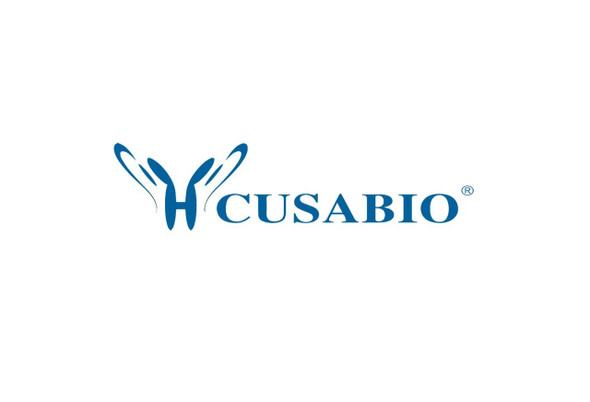Cusabio Active Proteins
Recombinant Mouse Fatty acid-binding protein, liver protein (Fabp1) (Active) | CSB-AP000551MO
- SKU:
- CSB-AP000551MO
- Availability:
- 5 to 10 Working Days
Description
Recombinant Mouse Fatty acid-binding protein, liver protein (Fabp1) (Active) | CSB-AP000551MO | Cusabio
Protein Description: Full Length
Alternative Name (s) : 14 kDa selenium-binding protein, Liver-type fatty acid-binding protein, L-FABP
Gene Names: Fabp1,Fabpl
Research Areas: Signal Transduction
Species: Mus musculus (Mouse)
Source: E.Coli
Tag Info: Tag-Free
Expression Region: 1-127aa
Sequence Info: MNFSGKYQLQ SQENFEPFMK AIGLPEDLIQ KGKDIKGVSE IVHEGKKIKL TITYGPKVVR NEFTLGEECE LETMTGEKVK AVVKLEGDNK MVTTFKGIKS VTELNGDTIT NTMTLGDIVY KRVSKRI
Biological Activity: Fully biologically active when compared to standard. The binding affinity of rMuFABP1 for the synthetic ligand cis-parinaric acid has been measured by fluorescence titration. Half maximal fluorescence of 2.5 μM rMuFABP1 is achieved with approximately 5 μM cis-paranaric acid.
MW: 14.2 kDa
Purity: >95% as determined by SDS-PAGE and HPLC.
Endotoxin: Less than 1.0 EU/µg as determined by LAL method.
Relevance: Binds free fatty acids and their coenzyme A derivatives, bilirubin, and some other small molecules in the cytoplasm. May be involved in intracellular lipid transport. Also seems to bind selenium.
PubMed ID: 15489334; 2760043; 21183079; 23806337; 23576753
Notes: Repeated freezing and thawing is not recommended. Store working aliquots at 4℃ for up to one week.
Function: Plays a role in lipoprotein-mediated cholesterol uptake in hepatocytes. Binds cholesterol. Binds free fatty acids and their coenzyme A derivatives, bilirubin, and some other small molecules in the cytoplasm. May be involved in intracellular lipid transport.
Involvement in disease:
Subcellular Location: Cytoplasm
Protein Families: Calycin superfamily, Fatty-acid binding protein (FABP) family
Tissue Specificity:
Paythway:
Form: Lyophilized powder
Buffer: Lyophilized from a 0.2 µm filtered concentrated solution in PBS, pH 7.4, 2 % trehalose.
Reconstitution: We recommend that this vial be briefly centrifuged prior to opening to bring the contents to the bottom. Please reconstitute protein in deionized sterile water to a concentration of 0.1-1.0 mg/mL.We recommend to add 5-50% of glycerol (final concentration) and aliquot for long-term storage at -20℃/-80℃. Our default final concentration of glycerol is 50%. Customers could use it as reference.
Uniprot ID: P12710
Uniprot Entry Name: FABPL_MOUSE
HGNC Database Link: N/A
UniGene Database Link: UniGene
KEGG Database Link: KEGG
STRING Database Link: STRING
OMIM Database Link: N/A









